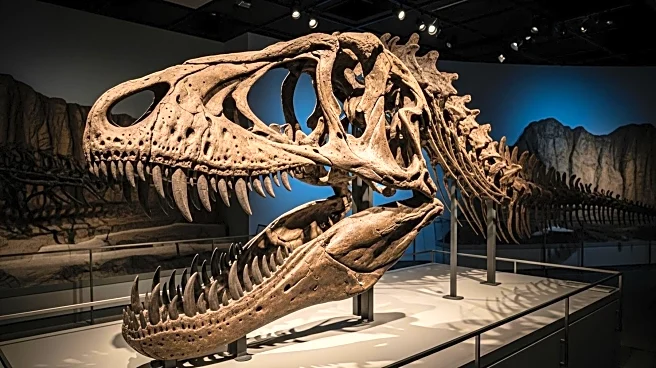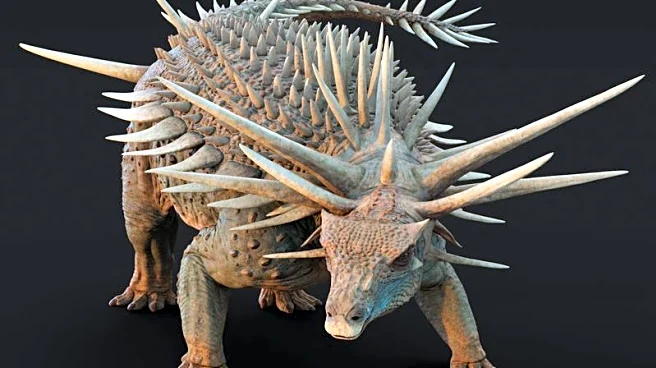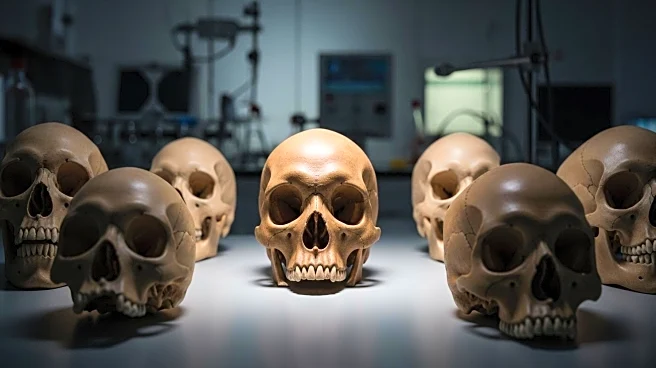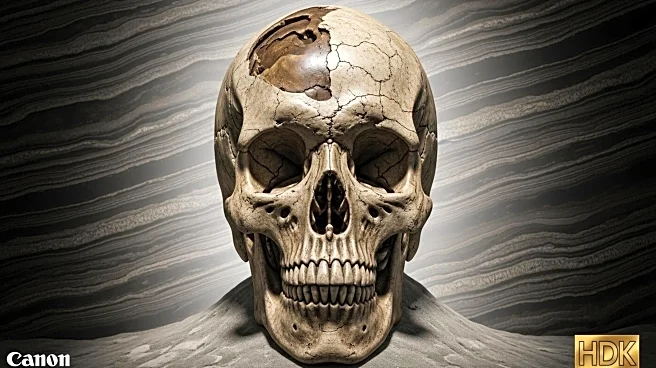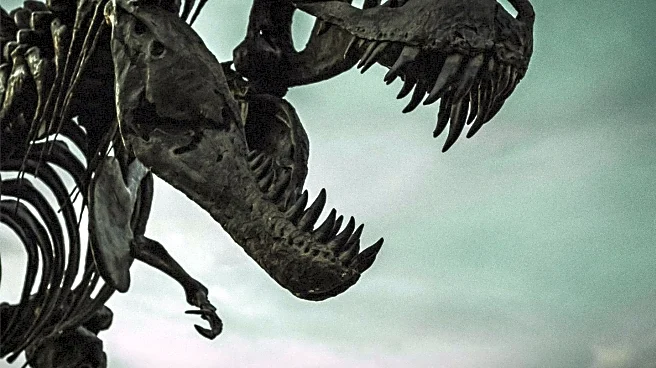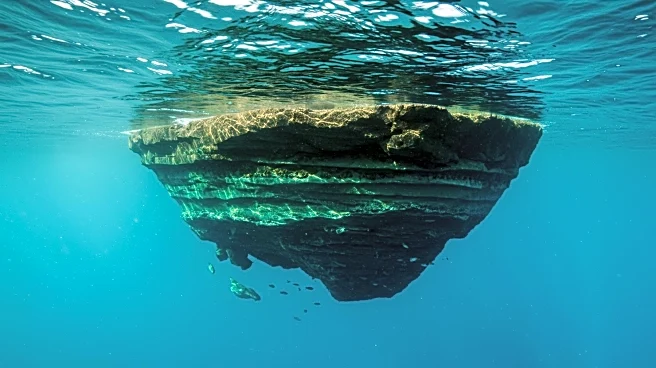Rapid Read • 7 min read
A fossil of an ancient crocodile relative, Kostensuchus atrox, has been discovered in southern Patagonia, revealing a formidable predator from the late Cretaceous period. The reptile, measuring approximately 3.5 meters in length and weighing around 250 kilograms, possessed large, serrated teeth capable of slicing through muscle and bone. This discovery suggests that Kostensuchus atrox could have preyed on medium-sized dinosaurs. The fossil includes a well-preserved skull and parts of the skeleton, indicating a robust build and powerful jaw muscles. Unlike modern crocodiles, Kostensuchus had a high, wide skull and elongated limbs, suggesting agility on land.
AD
The discovery of Kostensuchus atrox provides significant insights into the diversity of predators during the Cretaceous period. It highlights the existence of top predators coexisting with large meat-eating dinosaurs, offering a deeper understanding of the ecosystem dynamics at the time. This finding contributes to paleontological knowledge by showcasing the evolutionary adaptations that allowed such predators to thrive. It also underscores the importance of fossil discoveries in reconstructing ancient environments and understanding the evolutionary history of reptiles.
Further research and analysis of the Kostensuchus atrox fossil may provide additional insights into its behavior, ecological role, and interactions with other species. Paleontologists may continue to explore the region for more fossils, potentially uncovering additional evidence of the diverse range of predators that existed during the Cretaceous period. This could lead to a broader understanding of the evolutionary pathways and extinction events that shaped the current biodiversity.
The discovery of Kostensuchus atrox raises questions about the adaptability and survival strategies of ancient predators. It may prompt discussions on the evolutionary pressures that led to the development of such formidable traits, such as powerful bites and agile movement. Additionally, it highlights the ongoing efforts in paleontology to uncover and interpret the fossil record, contributing to the broader narrative of Earth's history.
AD
More Stories You Might Enjoy


